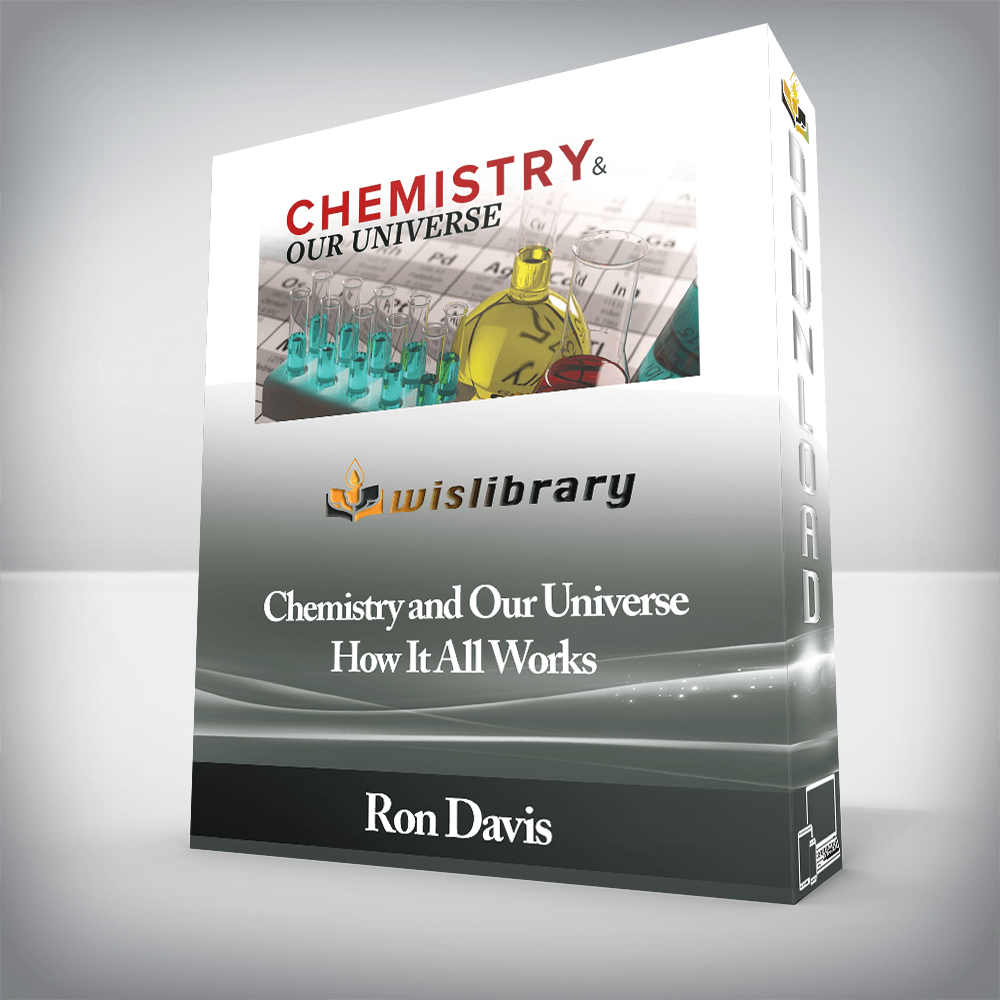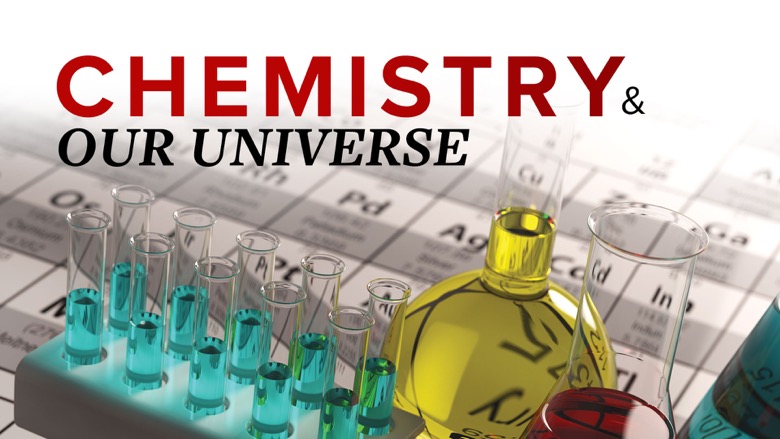


I hope this contributes to a lifelong journey exploring and appreciating the rich and beautiful chemistry of life and our world.
Institution: Georgetown University
Alma mater: Pennsylvania State University
Our world is ruled by chemistry. The air we breathe is nitrogen, oxygen, and trace gases. The clothing we wear is cellulose, protein, or synthetic polymers. When we take to the road, we are propelled by the combustion of hydrocarbons or the reactions inside storage batteries. Look around and everything you see is the product of chemistry—including the sunlight pouring through the window, which originates in the fusion of atoms at the core of the sun.
Chemistry is the study of matter and energy at the scale of atoms and molecules. As the most all-embracing discipline there is, it should be at the top of everyone’s list of must-learn subjects. Unfortunately, chemistry has an undeserved reputation for difficulty and abstraction. Any subject that encompasses as many components as chemistry is going to appear complex. The beauty of delving into the study of chemistry is the discovery of how organized, logical, consistent, and powerfully predictive it becomes—if properly presented.
Chemistry and Our Universe: How It All Works is your in-depth introduction to this vital field, taught over 60 visually innovative half-hour lectures that are suitable for the chemist in all of us, no matter what our background. Covering a year’s worth of introductory general chemistry at the college level, plus intriguing topics that are rarely discussed in the classroom, this amazingly comprehensive course requires nothing more advanced than high-school math. Employing simple concepts, logical reasoning, and vivid graphics that illuminate the wonders of chemistry, these lectures make essential concepts crystal clear. Best of all, this highly interactive approach features extensive hands-on, dramatic demonstrations, from which you will gain extraordinary insight into how the universe works.
Your guide is Professor Ron B. Davis, Jr., a research chemist and award-winning teacher at Georgetown University. With passion and humor, Professor Davis guides you through the fascinating world of atoms, molecules, and their ceaseless interactions, showing you how to think, analyze problems, and predict outcomes like a true expert in the field.
A Chemistry Course Like No Other
Chemistry and Our Universe is ideal for anyone curious about the underlying unity of the material world or interested in such subjects as cooking, painting, metalworking, pottery, auto mechanics, gardening, energy production—there are countless everyday uses of chemistry. The ideas you explore in these lectures truly have universal applications. The course will also appeal to those currently involved in chemistry—from chemistry students in high school or college to health professionals, scientists, managers in industry, and others for whom a refresher course taught by an outstanding teacher will spark new insights.
Anyone who sat through introductory chemistry in a lecture hall will be astonished by what computer-generated graphics and 3-D animations can do to make the subject engaging and understandable Professor Davis worked with The Great Courses production team to create a chemistry course like no other, with features including:
Setting the Periodic Table
Walk into any chemistry classroom or open any chemistry textbook and you will see the periodic table of elements. It can also be glimpsed on T-shirts, coffee mugs, sneakers, and even dining tables, especially around universities. Although committing the elements to memory can be the bane of many beginning chemistry students, once you learn the straightforward rules for deciphering it, this compendium of data becomes remarkably simple to use. Under Professor Davis’s expert guidance, you learn to read the many levels of information in the periodic table; see how it predicts properties such as melting and boiling points; and discover why gaps and mysteries in the first drafts of the table by its creator, Dmitri Mendeleev, led to key breakthroughs in chemistry.
Simply by ordering the known chemical elements—the different atoms that constitute matter—by their relative weights, Mendeleev was able to discover patterns among elements with similar properties. Moreover, his early versions of the table proved to be a veritable treasure map, pointing the way to new elements, new properties, and hinting at new atomic features that were yet to be discovered. One of these features turned out to be the electron, which, in its many configurations surrounding atoms, explains the most notable characteristics of the chemical world: the bonding of atoms to make molecules, and the way atoms and molecules combine and recombine in chemical reactions.
Meet Chemistry’s Greatest Thinkers
As you progress through Chemistry and Our Universe, you build an understanding of the many ways in which atoms can be combined to create a huge assortment of materials. By the last part of the course, you will be ready to survey the complex chemistry of entire systems—and you have the opportunity to do so in lectures devoted to the Earth, the oceans, the atmosphere, and the cosmos itself.
Throughout the course, you meet dozens of major figures in the history of chemistry—great scientists such as Antoine Lavoisier, Joseph Priestley, John Dalton, Marie Curie, Svante Arrhenius, Robert Millikan, Alexander Fleming, and Linus Pauling, to name just a few. You learn who they were, the mysteries they attempted to solve, and the innovations that saw their names attached to new principles, equations, or scientific laws. In many cases, you get to see demonstrations that illustrate their important insights, helping to cement key concepts in your mind.
Put on Your ‘Chemistry Glasses”
As befits a subject that deals with the entirety of the material world, your journey in Chemistry and Our Universe covers quite a lot of territory. By the close of Lecture 60, you will have surveyed the map of the discipline, learned the foundational principles, and prepared for deeper exploration in more advanced courses. You will be able to read science news articles with an enhanced understanding, talk shop with chemists, and have informed opinions about the chemistry behind public policy issues such as energy production and climate change.
Above all, you will find that you have acquired a delightful accessory that adds a new dimension to life: ‘chemistry glasses.” Wherever you look—in the medicine chest, in the natural world, in a kitchen drawer, anywhere—you will see things in a fresh and exciting way. For example:
”Chemistry is Wonderful!”
Early in the course, Professor Davis presents the pioneering research on the chemical bond by one of history’s greatest chemists, Linus Pauling, whose work won him the 1954 Nobel Prize in Chemistry. Pauling is truly a role model for seeing the big picture, because his understanding of events in the atomic realm led him to grasp the tremendous dangers posed by nuclear testing, and his campaign for nuclear disarmament won him a second Nobel Prize, this one for Peace in 1962.
After he retired, Pauling gave a talk at which he couldn’t help promoting his field. ‘Chemistry is wonderful!” he exclaimed. ‘I feel sorry for people who don’t know anything about chemistry. They are missing an important part of life, an important source of happiness—satisfying one’s intellectual curiosity. The whole world is wonderful and chemistry is an important part of it.” After you finish these exhilarating lectures, you’ll know exactly what he means.
1Is Chemistry the Science of Everything?
2Matter and Measurement
3Wave Nature of Light
4Particle Nature of Light
5Basic Structure of the Atom
6Electronic Structure of the Atom
7Periodic Trends: Navigating the Table
8Compounds and Chemical Formulas
9Joining Atoms: The Chemical Bond
10Mapping Molecules: Lewis Structures
11VSEPR Theory and Molecular Geometry
12Hybridization of Orbitals
13Molecular Orbital Theory
14Communicating Chemical Reactions
15Chemical Accounting: Stoichiometry
16Enthalpy and Calorimetry
17Hess’s Law and Heats of Formation
18Entropy: The Role of Randomness
19Influence of Free Energy
20Intermolecular Forces
21Phase Changes in Matter
22Behavior of Gases: Gas Laws
23Kinetic Molecular Theory
24Liquids and Their Properties
25Metals and Ionic Solids
26Covalent Solids
27Mixing It Up: Solutions
28Solubility and Saturation
29Colligative Properties of Solutions
30Modeling Reaction Rates
31Temperature and Reaction Rates
32Reaction Mechanisms and Catalysis
33The Back and Forth of Equilibrium
34Manipulating Chemical Equilibrium
35Acids, Bases, and the pH Scale
36Weak Acids and Bases
37Acid-Base Reactions and Buffers
38Polyprotic Acids
39Structural Basis for Acidity
40Electron Exchange: Redox Reactions
41Electromotive Force and Free Energy
42Storing Electrical Potential: Batteries
43Nuclear Chemistry and Radiation
44Binding Energy and the Mass Defect
45Breaking Things Down: Nuclear Fission
46Building Things Up: Nuclear Fusion
47Introduction to Organic Chemistry
48Heteroatoms and Functional Groups
49Reactions in Organic Chemistry
50Synthetic Polymers
51Biological Polymers
52Medicinal Chemistry
53Poisons, Toxins, and Venoms
54Chemical Weapons
55Tapping Chemical Energy: Fuels
56Unleashing Chemical Energy: Explosives
57Chemistry of the Earth
58Chemistry of Our Oceans
59Atmospheric Chemistry
60Chemistry, Life, and the Cosmos
There are no reviews yet.
You must be <a href="https://wislibrary.net/my-account/">logged in</a> to post a review.